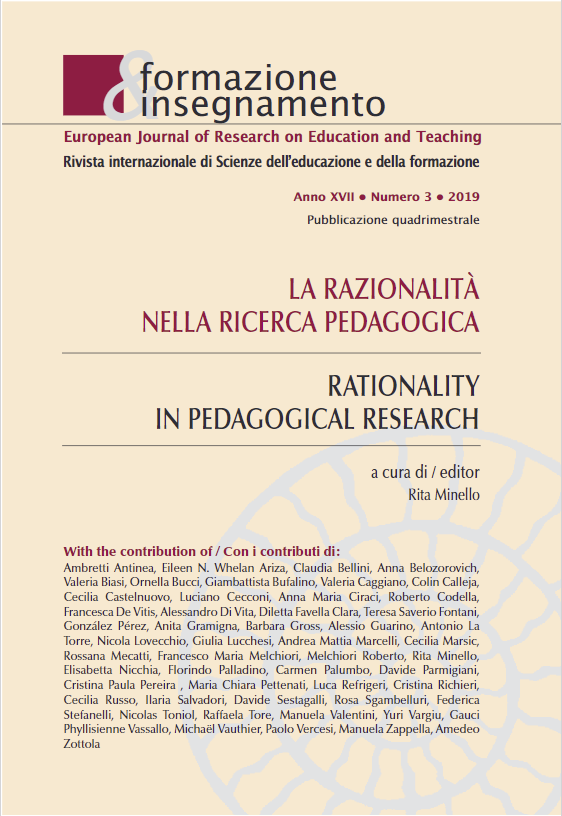Childish psychomotricity: didactic implications according to praxeological perspective
DOI:
https://doi.org/10.7346/-fei-XVII-03-19_13Abstract
In the National Guidelines for the Curriculum of the Childhood School of 2012, they suggested a review of the curricular organization, starting from the recovery of the forms of play and free or guided movement as the opportunity to discover and build the identity of the collective and personal oneself. With these aims, the “sense of movement” has taken on a value of its own not only as the product of the integrated and synergistic action of sensory receptors typical of kinesthesia (Berthoz, 1998) but as the foundation of the construction of wider meanings achievable through multiform relationships and adaptive, that are established between the body and the environment through ludiform paths. In this perspective, the Ministerial Documents of 2012 focused on the Childhood, there is an element which plays a central role: the revisiting of all procedures/modalities to keep in touch with the child and to link him to the actuality, his different playful codes, included the motor one, highlighting the ludic use of the body and of the movement. This multidimensional nature of the playful-motor phenomenon suggests the capitalization of the didactic properties of the game and the movement, suggesting a possible redesign of didactic itineraries since the School of Infancy. It is up to the school to recover this deficiency by accepting the educational-inclusive suggestions coming from the psychomotricity, in an attempt to reconstruct the conditions to know which forms of play are most suitable (as a theme, as a structure, as a possibility of change and transformation of rules, as a potential learning) to children in the age that involve us (Staccioli, 1987).
Downloads
Published
How to Cite
Issue
Section
License
Copyright (c) 2019 Pensa MultiMedia

This work is licensed under a Creative Commons Attribution 4.0 International License.
Formazione & insegnamento is distributed under Attribution 4.0 International (CC BY 4.0).
For further details, please refer to our Repository & Archiving Policy, as well as our Copyright & Licensing Terms.





